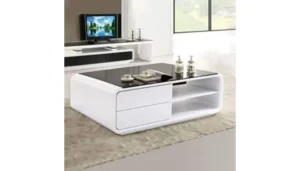How to Effectively Use 3D Rendering Services for Marketing?
3D rendering is a cost-effective marketing tool, enhancing visuals for various platforms. It allows design flexibility and improves customer engagement through interactive elements.

3D rendering stands out as a versatile tool for modern marketing efforts. It enables marketers to create eye-catching visuals without the high costs associated with traditional photo shoots. By using 3D images, brands can easily adjust designs to display various colors or materials, enhancing customer interest and engagement. Applications span across websites, social media, email campaigns, and print materials—each offering substantial advantages in user interaction and appeal. Plus, incorporating interactive elements like AR can elevate customer experiences further. With regular performance measurement and staying abreast of industry trends, businesses can refine their strategies effectively for lasting impact in the market.
1. Understanding 3D Rendering for Marketing
3D rendering is a powerful tool that transforms conceptual designs into stunning visual formats. By using specialized software, marketers can simulate lighting, materials, and textures to create images that look incredibly real. This process allows for the creation of photorealistic visuals that closely resemble actual products, making them highly effective in capturing customer interest.
However, 3D rendering isn’t just about realism. It can also produce stylized visuals tailored to reflect a brand’s unique identity and messaging. This versatility makes it suitable for various industries, including real estate, product design, and entertainment. For example, real estate agents can showcase properties with high-quality 3D renders, giving prospective buyers a detailed view without needing to visit each location physically.
One of the most significant advantages of 3D rendering is its ability to facilitate quick adjustments to designs and models. This feature saves both time and resources, allowing businesses to modify colors, materials, and settings without the need for physical prototypes. Additionally, visuals can be rendered from multiple angles, providing customers with a comprehensive understanding of the product.
3D rendering services can also be integrated with animations, creating dynamic presentations that enhance marketing campaigns. This technology supports prototyping, enabling teams to visualize products before they go into production. Moreover, showcasing products in various environments can help customers understand their potential uses better, ultimately driving engagement and sales.
2. Benefits of Using 3D Rendering
3D rendering offers numerous benefits that can significantly enhance marketing strategies. One of the most notable advantages is cost-effectiveness; businesses can reduce the need for physical prototypes, which often incur high production costs. This shift not only saves money but also accelerates the design process. Flexibility is another key benefit—marketers can easily modify designs to align with current market trends, showcasing different colors or materials without the lengthy process of creating new prototypes.
High-quality visuals play a crucial role in standing out in a crowded marketplace. By utilizing detailed and photorealistic 3D images, brands can enhance their appeal and foster greater customer engagement. These captivating visuals can be repurposed across various platforms, such as websites, social media, and print materials, maximizing marketing efforts and ensuring a cohesive brand presence.
Moreover, realistic representations help boost customer confidence, making it easier for them to make purchasing decisions. Clear visuals can also streamline the approval process with stakeholders, as everyone can see exactly what is being proposed. This clarity extends to internal teams and clients as well, facilitating better communication of concepts.
In terms of brand credibility, high-resolution visuals convey professionalism, adding to the company’s reputation. The technology also supports personalized marketing strategies, allowing businesses to showcase tailored options that resonate with individual consumers. Ultimately, 3D rendering elevates the perceived value of products through engaging visuals, making it a powerful tool for marketers.
- 3D rendering reduces the need for physical prototypes, cutting down production costs.
- Flexibility in design modifications allows for quick adaptations to market trends.
- High-quality visuals can differentiate brands in a competitive marketplace.
- 3D images can be reused across various platforms, maximizing marketing efforts.
- Realistic representations can boost customer confidence in purchasing decisions.
- 3D rendering can streamline the approval process with stakeholders by providing clear visuals.
- It facilitates better communication of concepts with clients and internal teams.
- High-resolution visuals can enhance brand credibility and professionalism.
- The technology can cater to personalized marketing strategies by showcasing tailored options for consumers.
- 3D rendering can elevate the perceived value of products through engaging visuals.
3. Key Applications in Marketing
3D rendering has a variety of practical applications that can transform marketing strategies. In e-commerce, 3D renders enhance the online shopping experience, allowing customers to view products in lifelike detail. This immersive approach can significantly boost online sales by helping customers feel more connected to the product. On social media, eye-catching 3D visuals can grab attention, encouraging shares and interactions that expand brand reach.
Email campaigns can also reap the benefits of 3D images; incorporating these visuals can lead to higher open rates and increased engagement as they stand out in crowded inboxes. In print advertising, using 3D renders creates memorable impressions, enabling potential customers to visualize products attractively.
Virtual showrooms take this to the next level by offering interactive experiences, letting customers explore products at their own pace. 3D visuals can enhance promotional videos, making them more engaging and informative by showcasing product features dynamically.
At trade shows, incorporating 3D displays can effectively attract visitors and provide them with an immersive experience of the product. In real estate marketing, 3D renderings can present properties appealingly, helping potential buyers envision their future homes. Additionally, 3D visualization of product packaging communicates design concepts clearly, making it easier for brands to convey their vision.
Finally, 3D content can elevate presentations and pitches, making them more persuasive and impactful in convincing stakeholders and customers.
4. Enhancing Audience Engagement with 3D
Interactive 3D content transforms the way customers engage with products. It allows them to explore items in a personalized manner, making the shopping experience more immersive. Augmented reality features can help users visualize products within their own spaces, providing a clearer idea of how an item fits into their lives before making a purchase. For instance, a furniture retailer can offer an AR tool that lets customers see how a sofa looks in their living room, enhancing confidence in their decisions.
3D animations play a crucial role in simplifying complex product functionalities. Instead of lengthy descriptions, a short animation can effectively demonstrate how a device works, making it easier for potential buyers to understand its value. This clarity can lead to higher conversion rates.
At events like trade shows, utilizing dynamic 3D presentations can significantly capture the audience’s attention. A well-designed 3D display can stand out in a crowded environment, drawing in curious attendees and creating opportunities for engagement.
Storytelling through 3D visuals further strengthens emotional connections with the audience. By showcasing a product’s journey or the problem it solves, brands can resonate more deeply with their customers. Gamification elements in 3D content can also enhance user involvement, making experiences more enjoyable and encouraging retention.
Live demonstrations using 3D renderings create memorable moments for potential buyers, helping them visualize the product in action. Incorporating customer feedback into 3D designs can improve satisfaction, fostering brand loyalty. Additionally, including social sharing options in interactive 3D content encourages virality, allowing customers to easily share their experiences with others. User-generated 3D content can also promote community engagement, further solidifying brand loyalty.
5. Boosting SEO with 3D Images
3D images, when optimized, can significantly enhance page load times, leading to a better user experience. This is crucial since fast-loading pages rank higher in search results. To make the most of your 3D visuals, ensure you include alt tags and descriptive file names. These elements not only aid accessibility but also improve your search visibility, making it easier for potential customers to find your content.
Moreover, 3D content tends to keep visitors on your site longer, a positive engagement metric that search engines consider for rankings. The more time users spend interacting with your visuals, the better your chances of climbing up the search engine ladder. Engagement metrics, such as shares and comments on your 3D images, further boost your SEO performance, signaling to search engines that your content is valuable.
Creating unique 3D content sets your brand apart in search results, making it more memorable. Additionally, incorporating these visuals into blog posts can lead to higher click-through rates, drawing more traffic to your site. Utilizing rich snippets for your 3D images can enhance how your listing appears in search results, attracting more clicks.
3D content is easily shareable across various platforms, which helps in generating backlinks—another key factor in improving SEO. Regularly updating your 3D visuals also signals relevance to search engines, keeping your brand fresh in their algorithms. Lastly, leveraging 3D visuals in online advertising can drive traffic back to your website, ultimately boosting your organic search performance.
6. Building Partnerships for Greater Impact
Collaborating with influencers to showcase your 3D content can significantly expand your brand’s reach. Influencers already have established audiences that trust their recommendations, making them perfect partners for promoting your visuals. Joint marketing campaigns can also allow for shared resources, which maximizes both impact and exposure. When you network with industry professionals, you can gain valuable insights and uncover new opportunities that you may not have considered. Additionally, co-creating 3D content with partners can spark creativity and innovation, leading to unique visuals that stand out.
Utilizing partnerships for cross-promotion of 3D visuals can help attract diverse audiences. For example, if you partner with a complementary brand, you can create bundled offers featuring your 3D visuals, which adds value for customers. Displaying your 3D content on partner platforms enhances visibility, ensuring your work reaches potential customers who may not have encountered your brand otherwise.
Showcasing 3D content through reputable partners can also establish credibility. When well-known brands display your visuals, it elevates your own brand’s status. Building relationships with media outlets can further enhance the distribution of your 3D marketing materials, helping you reach wider audiences. Lastly, partnerships can lead to co-hosted events featuring 3D presentations, which can attract larger crowds and generate buzz around your offerings.
7. Measuring Performance of 3D Content
Measuring the performance of your 3D content is crucial for understanding its impact on your marketing efforts. Start by establishing key performance indicators (KPIs) tailored to your goals. These could include metrics like engagement rates, click-through rates, and conversion rates. Monitoring engagement metrics, such as views and shares, helps you assess how well your 3D visuals capture attention and encourage interaction.
Utilizing analytics tools allows you to gain deeper insights into user behavior. For example, you can track how often users engage with 3D content on your website. Implementing A/B testing with different 3D visuals can reveal which designs resonate best with your audience, helping to refine your approach.
Tracking conversion rates is essential to measure the direct impact of 3D content on sales. If a particular 3D render leads to higher sales, it indicates effective marketing. Additionally, gathering customer feedback can provide qualitative insights, helping you understand how 3D visuals enhance customer experience.
Heatmaps can be another useful tool, showing how users interact with 3D content on your site. This visual data can help you identify areas for improvement. Regularly reviewing performance data allows you to adjust strategies based on insights gained, ensuring that your campaigns remain effective and relevant.
Comparing the performance of 3D content against traditional visuals can highlight the benefits of 3D marketing. By showcasing the advantages of engaging visuals, you can justify investments in 3D rendering services. Adjusting your strategies based on performance insights fosters continuous improvement, ensuring your marketing efforts evolve with audience preferences.
8. Future Trends in 3D Rendering
The landscape of 3D rendering is evolving rapidly, driven by technological advancements and user demands. Real-time rendering technologies are making it possible to create interactive experiences that captivate users and enhance engagement. For marketers, this means that potential customers can visualize products in real-time, leading to better decision-making. Additionally, AI-driven design tools are streamlining the rendering process, reducing time and costs while allowing for creative flexibility.
Another exciting trend is the integration of 3D rendering with virtual and augmented reality. This combination is allowing brands to create immersive experiences that draw customers in, making them feel as if they are part of the product experience. For instance, a furniture company might enable customers to see how a sofa would look in their living room through AR, greatly improving the shopping experience.
Sustainability is also becoming a focal point in 3D rendering. Marketers are increasingly using these tools to support eco-friendly initiatives, showcasing products that are designed with sustainability in mind. This not only appeals to environmentally-conscious consumers but also aligns with global efforts to promote sustainable practices.
Customization options are expected to expand, allowing brands to create personalized marketing campaigns that resonate more with individual consumers. Imagine a shoe company offering customers the ability to visualize their custom designs in 3D before making a purchase.
As the rise of 3D printing continues, the way products are rendered and presented is also changing. Marketers can now create visuals that reflect the final product’s real-world characteristics, making it easier for consumers to understand what they will receive.
Mobile applications for 3D rendering are becoming more user-friendly, making it easier for businesses of all sizes to leverage this technology. This accessibility opens the door for smaller brands to compete on a larger scale by utilizing high-quality 3D visuals in their marketing efforts.
Cloud-based rendering services are facilitating collaboration among teams, making it easier to share and edit 3D content efficiently. This trend is particularly beneficial for marketing teams spread across different locations, allowing for seamless integration of ideas and designs.
Lastly, the growing trend of user-generated content is influencing how 3D visuals are created. Brands are encouraging customers to share their own 3D designs or experiences, fostering a sense of community and engagement that traditional marketing methods often lack. As marketers adapt to these future trends, the demand for immersive experiences will continue to drive innovation in 3D rendering technologies.
Frequently Asked Questions
1. What is 3D rendering, and why is it important for marketing?
3D rendering creates lifelike images or animations from 3D models. It’s important for marketing because it helps showcase products realistically, making them more appealing to potential customers.
2. How can businesses use 3D rendering to showcase their products?
Businesses can use 3D rendering to create visual content like product images, animations, or virtual tours. This allows customers to see products in detail and from different angles before making a purchase.
3. What types of industries benefit most from 3D rendering services?
Many industries benefit from 3D rendering, including real estate, architecture, interior design, and product development. These industries can use 3D visuals to attract attention and explain complex ideas more easily.
4. Can 3D rendering enhance online marketing strategies?
Yes, 3D rendering can greatly enhance online marketing strategies. High-quality visuals can improve website engagement, boost social media posts, and enhance advertising campaigns by making them more attractive.
5. Which is better for storytelling in marketing, 3D rendering or traditional images?
3D rendering is often better for storytelling in marketing because it can create immersive experiences. With 3D, you can virtualize scenarios, tell a story through animations, and engage audiences more effectively than traditional images.
TL;DR Explore how 3D rendering can transform your marketing strategy. Understand the basics and benefits, including cost-effectiveness and flexibility. Utilize 3D images in various applications like websites, social media, and emails to engage your audience. Enhance SEO with optimized visuals, collaborate with partners for wider reach, and track performance metrics to refine your efforts. Stay ahead of trends in 3D technology to ensure impactful campaigns that resonate and drive sales.







